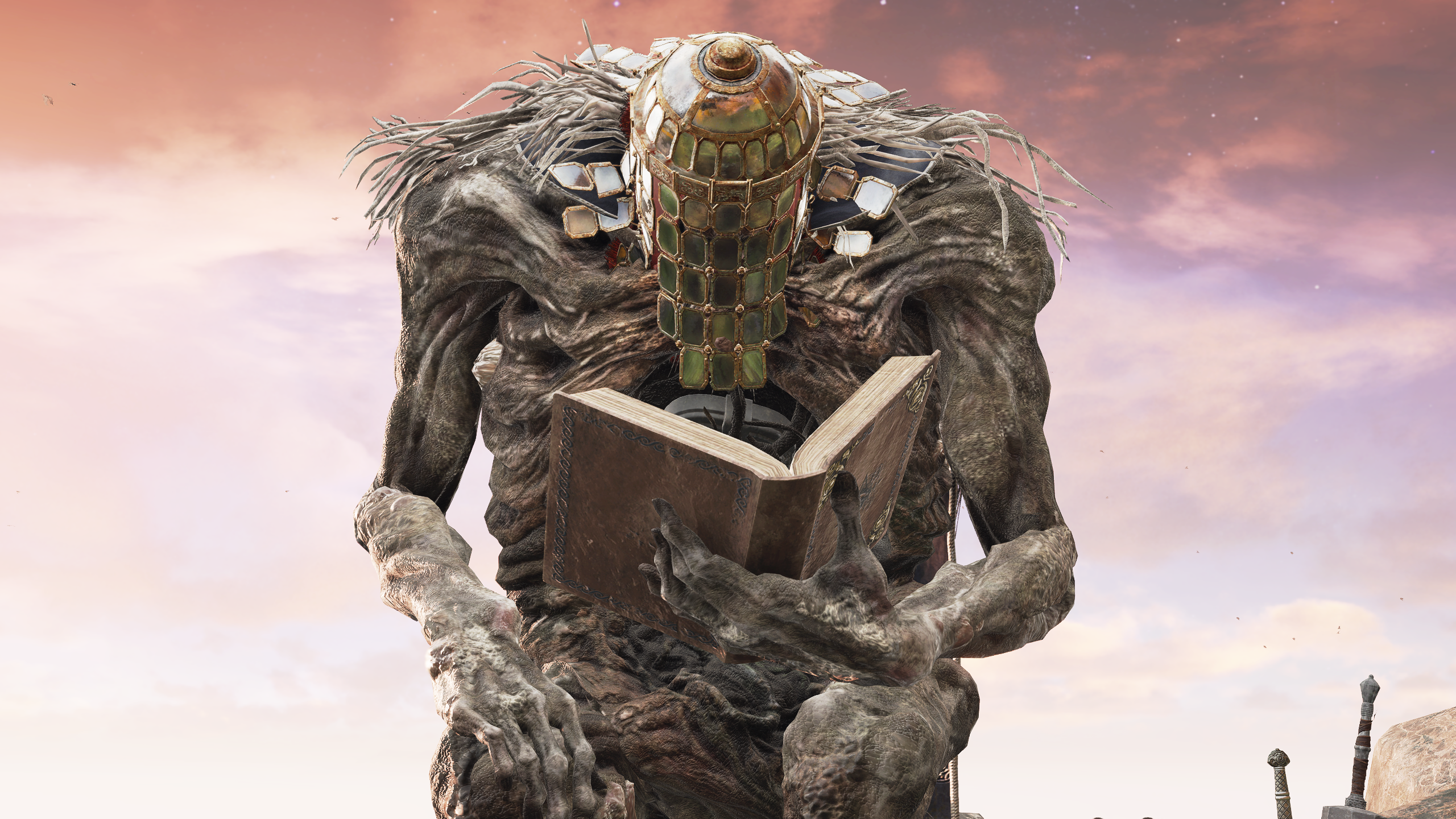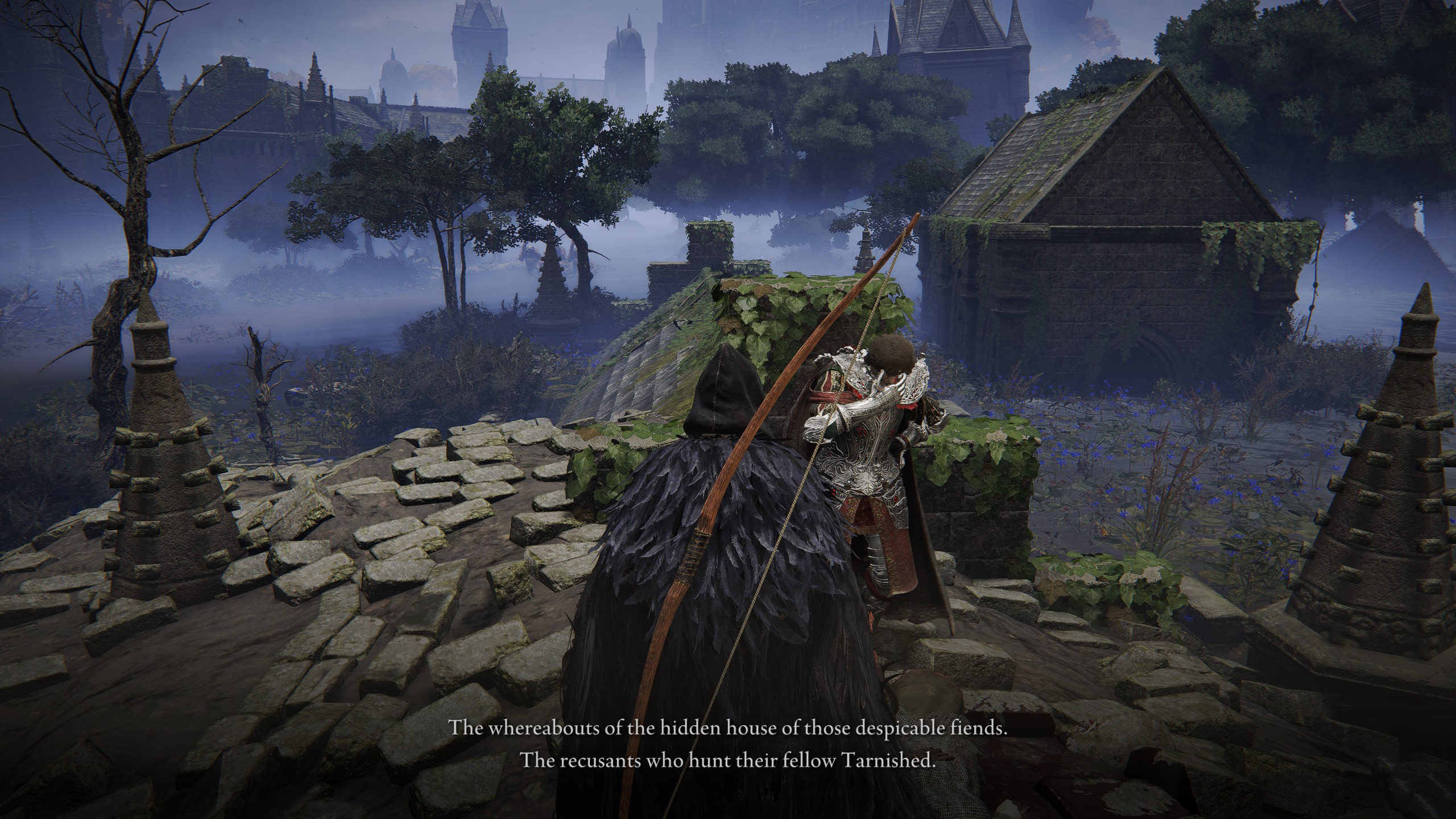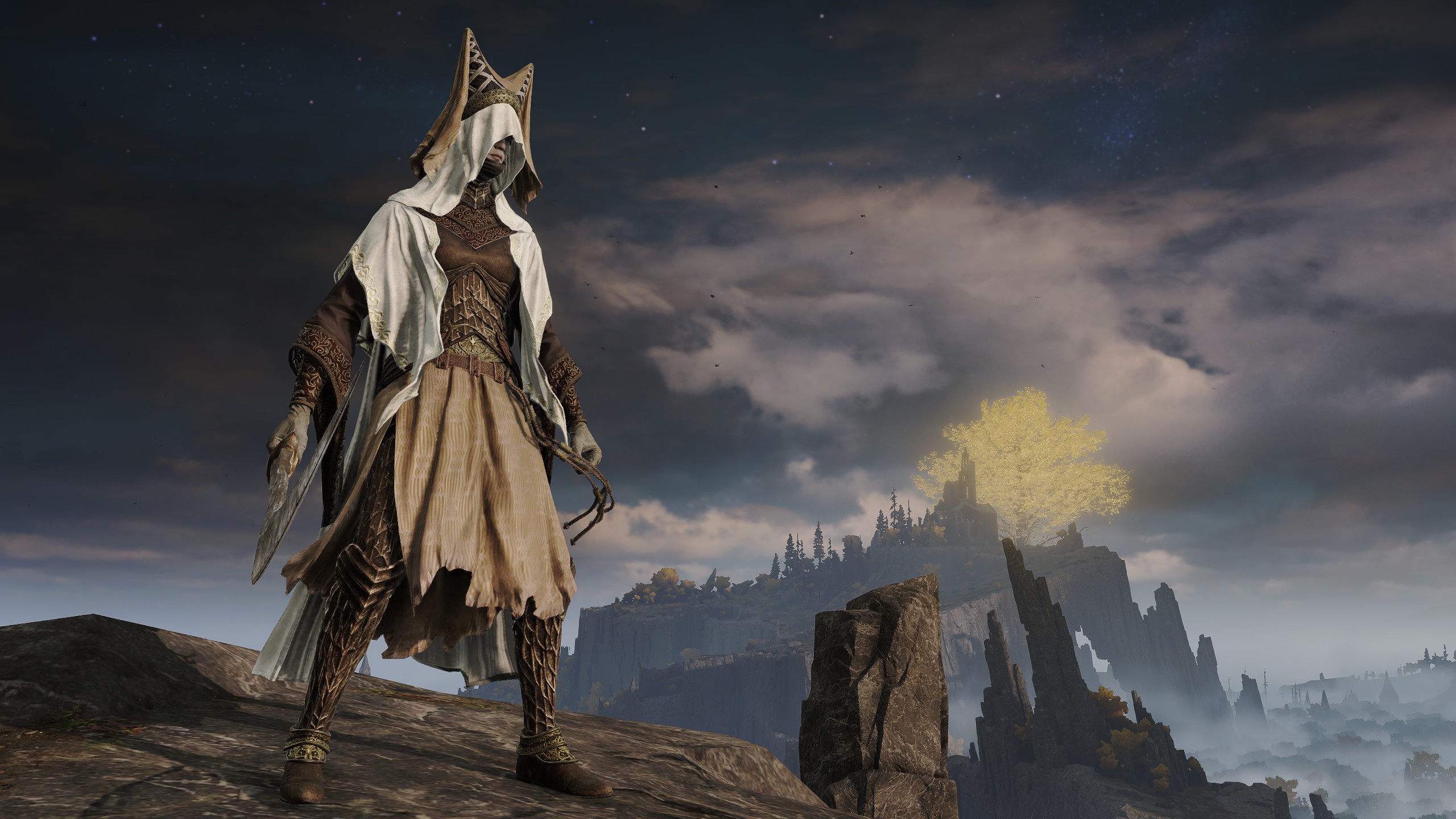Elden Ring's NPC quest markers are just a Band-Aid
Actual glitches aside, these elliptical mini-narratives were never meant to be a checklist.

Elden Ring's phenomenal success has resulted in conversations about every aspect of the game and a new level of scrutiny on some of the FromSoftware's design decisions dating back to the original Demon's Souls. The studio sidesteps the typical ways of doing things in the games industry, and over the many years since Demon's Souls has doggedly persisted with its own ideas about how 'standard' elements of the experience should work.
A bone of contention in Elden Ring has been its quest design, brought to the fore by a patch that fixes some glitches that caused questlines to abruptly stop before intended. Amusingly enough, some of the quest bugs fixed by the patch hadn't been noticed by players, who understandably assumed that someone disappearing in an unexplained manner is just how FromSoftware's stories roll sometimes.
The main issue is, for want of a better term, how esoteric and roundabout these quests can be in the world. Elden Ring's map is absolutely ginormous and weeks after launch I'm still discovering entire new areas. It's such a vast landscape with various events happening at different times of day that you've no hope of finding everything without either infinite time or just following guides. Elden Ring is designed in such a way that if you play through it 'normally' without looking stuff up—which is what I'd recommend to anyone, forget the guides and go in blind—you will absolutely miss both big and small parts of it.
There are characters in the games so secluded that you wonder how anyone finds them.
I'm not a completionist about videogames, but some folk clearly are and have an expectation that a game should show you everything or let you 'get' everything in one playthrough: or, at the very least, not hide the cool stuff. The Souls games have explicitly pushed against this since the first: you had to go through Demon's Souls multiple times to access certain quests, manipulating a truly unintuitive mechanic called World Tendency in the right way (which was a total ballache), and some decisions would completely alter a playthrough. One character, Mephisto, is incredibly difficult to come across and, if you follow their instructions, you'll end up killing almost every allied NPC in the game.
This fragmentary style of quest design continued throughout the Souls series: there are characters in the games so secluded that you wonder how anyone finds them. There are quests that involve decisions which, for that playthrough, will have an irreversible knock-on effect on the fate of characters, where you can go, or what items you can get.
Elden Ring quests are designed to create a different effect on the player and world than a typical quest tracker would allow. Many of Elden Ring's quests can be boiled down to the standard "Travel from A to B, bring C to D" structure that western RPGs like Skyrim share.
The difference is in how Elden Ring's characters move through the world without giving the player their itinerary. Fromsoft wants its NPCs to feel like they are characters with their own motivations and their own journeys independent from the player's interests. It particularly enjoys threading characters through a progression that roughly mirrors the quest the player is on, and uses features like making NPC summons to suggest links between characters and a particular boss or region. Characters sometimes drop hints as to where they're heading, or their ultimate objective, but FromSoft is equally happy to have them make seemingly random appearances at odd bits of the map you wouldn't expect.
Keep up to date with the most important stories and the best deals, as picked by the PC Gamer team.

Where these worlds once gave you bits of stories, pieced-together over time and experience, now the full arc's being plotted out in a menu.
The outcome of this, whatever your opinion of it as a structure, is that you rarely get 'complete' quest arcs in your first playthroughs. This structure worked better in the older games, which were much smaller in scale than Elden Ring. While the characters' movements may have been impossible to predict, Dark Souls' world of Lordran was compact enough that you would frequently happen across characters in new places. These small discoveries are one of the series' greatest pleasures. With the Lands Between there's an argument that no player is, realistically, going to do the kind of cross-country investigative work needed to find everybody, and it's clearly a line of thought that has found some purchase at the developer.

Elden Ring bosses: How to beat them
Elden Ring map fragments: Reveal the world
Elden Ring weapons: Arm yourself
Elden Ring armor: The best sets
Elden Ring Smithing Stone: Upgrade your gear
Elden Ring Ashes of War: Where to find them
Elden Ring classes: Which to choose
The recent Elden Ring patch commits what some might consider an aesthetic crime in this regard: adding NPC markers to the map in response to audience feedback. It means it's harder to mess things up, but also that there's no mystery about who people are or where they go. Where these worlds once gave you bits of stories, pieced-together over time and experience, now the full arc's being plotted out in a menu.
So removing the mystery of where NPCs are could be seen as a necessary evil—after all, most players who're interested are just going to look up guides anyway. For me it really takes away an element of mystique and, for want of a better term, grounded-ness: how NPCs move in and out of the world throughout your journey, rather than acting like they've nothing better to do than wait around for another Tarnished. The idea you don't always know the full story is a powerful narrative trick, and this change removes that element of unknowing around the NPCs and their own travels.
I guess it all comes down to the question of what a quest is, or should be, in a game: and the degree of control a player has over how they play out. The main goal of these games after all is not side-stories but killing armies of grunts and then huge bosses. It may be that this approach to quest design fit much better in the relatively smaller, more enfolded environments of previous games: but at this scale loses traction—in which case NPC markers don't address this meaningfully and are acting as a band-aid.
Many will be happy that Elden Ring's plentiful NPCs can now be more easily identified, tracked, and their through-lines followed without a google search. I feel it takes some of the world's intrigue away, and has entirely removed the quiet thrill of these encounters: there is no longer that sense of something blooming unexpectedly.

"I think of serious characters like seedlings scattered over waste lands, hiding sorrow in their minds."
Hidetaka Miyazaki
I still haven't finished Elden Ring, but I love that thrill of finding a Site of Grace and seeing someone I've never met there: even better when it's someone I vaguely remember from hours ago, but now in a different place with new dialogue or a missing companion In these hostile worlds I see NPCs as these little beacons of light signalling that, for the time I'm with them, nothing is trying to kill me. There's no dragon to slay, just D sharing his thoughts on Mariners. I once interviewed Miyazaki and asked about the grim endings these elliptical narratives sometimes produced.
"As the creator of them I am very happy with your description of 'jolly characters'," Miyazaki said at the time. "I think of serious characters like seedlings scattered over waste lands, hiding sorrow in their minds. But if I try to draw such characters, sometimes the seeds bloom unexpectedly. Having said that, I believe that some of the endings were what the characters hoped."
That makes me think, oddly enough, of an early quest in Fallout: New Vegas where you have to find out who a guy's partner is cheating with. You have two options, and the one I chose made him spin on the spot as soon as I delivered the dialogue, whereupon he hoisted his rifle and instantly blew his love rival's head off. That's a videogame quest. The best of the Souls series always felt much less cut-and-dried than such stories, and rarely deliver traditionally satisfying conclusions: perhaps because large parts of them are always left up to the player's imagination.
I don't like the NPC markers, but I also don't have a better solution. Players shouldn't be expected to complete a game of this size multiple times to be fulfilled by its quests—but then again, does every game need to make its best moments easily discoverable?
If anything, Elden Ring is a testament to FromSoft's dogged pursuit of ambiguous game design and how it gradually taught players how to enjoy its storytelling style over seven games and 13 years. I'm a little sad that, thanks to Elden Ring's adoption by a bigger audience than ever before in the series, parts of that philosophy are being compromised. All videogames are smoke-and-mirrors. Showing too much of their workings may well help players finish a checklist: it also makes the experience just that little bit more functional, and less surprising.

Rich is a games journalist with 15 years' experience, beginning his career on Edge magazine before working for a wide range of outlets, including Ars Technica, Eurogamer, GamesRadar+, Gamespot, the Guardian, IGN, the New Statesman, Polygon, and Vice. He was the editor of Kotaku UK, the UK arm of Kotaku, for three years before joining PC Gamer. He is the author of a Brief History of Video Games, a full history of the medium, which the Midwest Book Review described as "[a] must-read for serious minded game historians and curious video game connoisseurs alike."

